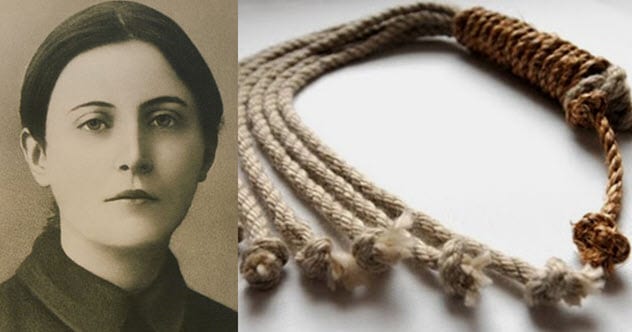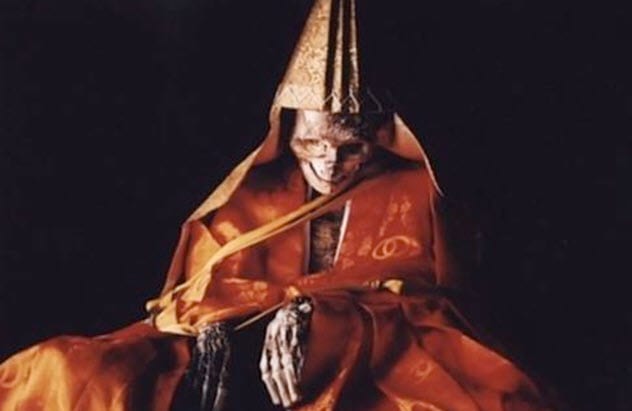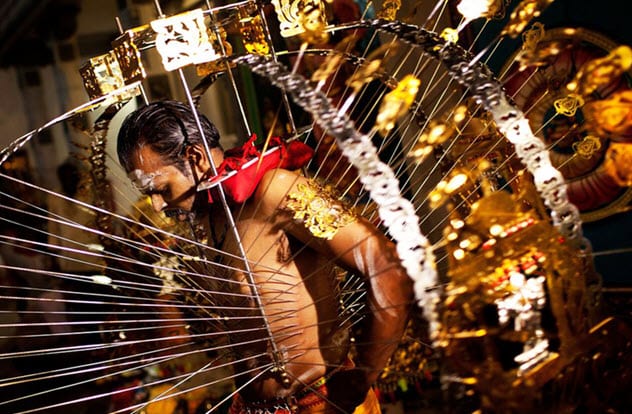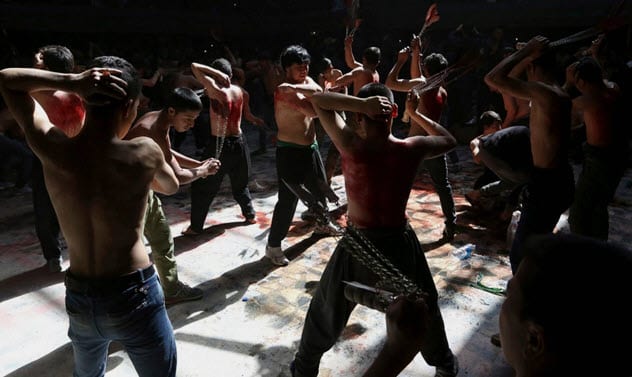 Our World
Our World  Our World
Our World  Weird Stuff
Weird Stuff 10 Fascinating Facts You Might Not Know About Snow
 Miscellaneous
Miscellaneous Top 10 Things Crypto Was Supposed to Change & What Actually Did
 History
History 10 Huge Historical Events That Happened on Christmas Eve
 Music
Music 10 Surprising Origin Stories of Your Favorite Holiday Songs
 History
History 10 Less Than Jolly Events That Occurred on December 25
 Weird Stuff
Weird Stuff 10 Funny Ways That Researchers Overthink Christmas
 Politics
Politics 10 Political Scandals That Sent Crowds Into the Streets
 Weird Stuff
Weird Stuff Ten Bizarre Facts About The Doge Meme
 Our World
Our World 10 Ways Your Christmas Tree Is More Lit Than You Think
 Our World
Our World 10 Archaeological Discoveries of 2025 That Refined History
 Weird Stuff
Weird Stuff 10 Fascinating Facts You Might Not Know About Snow
 Miscellaneous
Miscellaneous Top 10 Things Crypto Was Supposed to Change & What Actually Did
Who's Behind Listverse?

Jamie Frater
Head Editor
Jamie founded Listverse due to an insatiable desire to share fascinating, obscure, and bizarre facts. He has been a guest speaker on numerous national radio and television stations and is a five time published author.
More About Us History
History 10 Huge Historical Events That Happened on Christmas Eve
 Music
Music 10 Surprising Origin Stories of Your Favorite Holiday Songs
 History
History 10 Less Than Jolly Events That Occurred on December 25
 Weird Stuff
Weird Stuff 10 Funny Ways That Researchers Overthink Christmas
 Politics
Politics 10 Political Scandals That Sent Crowds Into the Streets
 Weird Stuff
Weird Stuff Ten Bizarre Facts About The Doge Meme
 Our World
Our World 10 Ways Your Christmas Tree Is More Lit Than You Think
Top 10 Bloodcurdling Religious Rites
To an outsider, everything in a religion can seem nonsensical and absurd. Sitting quietly and thinking really hard to get the Lord of Creation to alter the workings of the universe in your favor, or prayer, strikes atheists as madness.
But to those who have faith, religious acts can have profound and life-changing significance. There are some religious practices and ceremonies, though, that would make all but the most faithful squirm. But then that is the power of faith. Here are 10 shocking religious rites not for the fainthearted.
10 Cybele And Self-Castration

The Great Mother goddess Cybele was celebrated throughout the ancient Near East, Greece, and Rome. Often shown with a tambourine and flanked by lions, she was considered the universal mother because from her sprang all the other gods, humans, and animals. Images with similarities to Cybele have been found that are up to 8,000 years old.
When the worship of Cybele reached Greece and Rome, there was something which set her priests apart from those of the other gods. The priests of Cybele, called galli, were eunuchs. At a festival held in March which was known as the Day of Blood, the priests worked themselves into a frenzy and hacked off their genitals. Examples of the ornate clamps used to stem the flow of blood from the wounds have been found.[1]
Once the priest was castrated, he would dress in elaborate female dresses, wear earrings and bracelets, and put on makeup. This struck some Roman authors as somewhat unmasculine, but Cybele was the great mother after all.
9 Saintly Mortification

For many Christians, the body is something that gets in the way of being holy. It is hard to focus on God when you are distracted by the things of the flesh. As St. Paul wrote in his letter to the Romans, “For if you live according to the flesh, you will die, but if by the Spirit you put to death the deeds of the body, you will live.”
Mortification at its simplest is doing away with bodily things—such as fasting. However, there are those who have taken mortification a step further.
St. Gemma Galgani practiced mortification to always remember the sufferings of Jesus. At first, this was simply a rope with knots tied tightly about her waist. When this was removed by her priest because the knots had begun to eat into her flesh, she used whips to scourge herself. Later, she used a cord with nails in it to wrap around her waist.[2]
Many saints have gone to extremes to show their repugnance to this world by making it as painful as possible. Some of the early church fathers who lived in the desert wore nothing but irritating goat-hair shirts whatever the weather.
Some thought that too much water would let in demonic thoughts, so they encouraged people not to drink in the hot sun. Others stood so still that their feet rotted or held up a hand in prayer until it withered away.
Not for nothing does mortification mean “becoming like the dead.”
8 Aztec Sacrifice

Sometimes, to get closer to the gods, it is not your own blood that must be sacrificed. At times, someone else has to pay the price. And if the number of human sacrifices committed by the Aztecs is any guide, they had a hefty divine debt indeed.
Other civilizations in the region had performed ritual killing of humans but nothing like the scale of the Aztecs. At great Aztec festivals, hundreds or even thousands of victims would be put to death in rituals meant to placate the gods.[3]
As the gods had suffered in creating humans and the universe, it was felt that they had to be repaid for their efforts—and the balance was due in the form of human hearts and other body parts. Even for the Sun to rise each morning required a human death.
Most often, the victims of Aztec sacrifice were captured warriors. By putting such huge numbers of these fighters to death, the Aztecs reduced the numbers of their enemies and intimidated anyone who thought about attacking them. The sight of blood flooding from the altars of Aztec pyramids and coating the slopes must have been quite a warning.
7 Rite Of The Vattienti
As in many places in Italy, the streets in Nocera Terinese are filled with worshipers showing their faith on Good Friday. The difference is that they often show it with blood in Nocera Terinese.
While a statue of the Virgin and the dead Christ is paraded through the streets, young men prepare for their own procession. They wash their legs in warm water infused with rosemary to get the blood pumping in their legs before they let it out.
Using shards of glass attached to a circle of cork, they strike at their legs to start the bleeding. Using another circle without glass, they mark their passage through the streets with their own blood.
Attached to each bleeding man is a boy dressed in a red toga. He carries a red cross and is linked to the man by a rope to show the association between the man’s suffering and that of Jesus.[4]
Despite attempts to suppress this rite, it is still performed. At the end of the ritual, the wounds are washed with more rosemary water to soothe the pain. No one can say exactly when this bloody tradition began, but it does not look like it will stop anytime soon.
6 Sokushinbutsu

Mummification is known from many cultures, but it seems that Japan is unique in having mummies that were produced while the mummified person was still alive. Known as sokushinbutsu (“a Buddha in this very body”), at least 17 monks managed to make the leap to immortality by creating their own mummy.
The monks were emulating a historical figure called Kukai. He was said to have crawled into his own tomb intending to return at a later date.
Not all attempts to copy Kukai worked. Some monks who buried themselves were later found to have rotted. Those looking to become their own mummies had to follow an intensely unpleasant process and a diet over 1,000 days.
First, the monks gave up grains and foraged for nuts to eat to reduce their body fat. Possibly after several cycles of this diet, salt water was drunk to reduce the amount of water in the body to an absolute minimum. Eventually, a poisonous tea made from the lacquer tree was drunk. It contained compounds that would help to preserve the body.
The monk was then lowered into a pit in a box and covered over with charcoal to meditate. Each day, he would ring a bell to let his followers know that he was still alive. When the bell stopped, the monk’s air and water tubes were removed. The pit was sealed, and he was left for 1,000 days. If he was mummified when he was disinterred, he was brought out and placed in a shrine.[5]
No one knows how many monks failed to be preserved as it is likely that these rotting failures were quietly reburied.
5 Kavadi

At the Thaipusam Hindu festival in Malaysia, all varieties of religious observance can be seen—from prayer to dance to song to having objects impaled through your flesh.
The festival is held in honor of the Hindu god Murugan, and hundreds of thousands of worshipers attend each year. Before the main celebration, a silver chariot carries an image of Lord Murugan toward a temple in the Batu Caves where he will spend the festivities.
One way of showing devotion to the god is to join the procession to the caves or to carry milk as an offering. However, some prefer a more extreme form of worship which involves them carrying kavadis—decorated wooden frames. These frames are attached to the skin by hooks. Other worshipers pull carts solely by the hooks in their skin and walk to the temple.[6]
Some people also have skewers or symbolic spears inserted into themselves through the tongue and the cheeks. Robbed of the power of speech, they can focus entirely on the worship of their god. Once at the temple, everything can be unhooked and prayers are said to the god.
4 Flagellation

Self-flagellation (hitting oneself with whips) is a practice that is known in many faiths across the globe. For Christians, it is often performed in remembrance of the whipping received by Jesus before his crucifixion.
During the Black Death when people believed the plague was sent by God as punishment for Europe’s sins, huge bands of flagellants walked around beating themselves to bloody pulps to seek forgiveness.
In Germany, special songs called Geisslerlieder were sung as the penitents rhythmically scourged themselves. Even in the present, some Catholics beat themselves. Pope John Paul II was said to flagellate himself with a belt.
Other religions also see worshipers whip themselves. For some Shiite Muslims, Ashura, a day commemorating the death of one of Muhammad’s grandsons, is an occasion for self-flagellation and cutting. They march through the streets dressed in black and hit themselves with whips, chains, or blades linked together to draw blood.[7]
Occasionally, worshipers get more than they bargained for. Ten British men were infected with a blood-borne virus when a blade used to slice their foreheads was insufficiently sterilized as it was passed among the men.
3 Suttee

Suttee is a Hindu practice that may have been inspired by the actions of the goddess Sati. Upset with her father who looked down on her husband, Shiva, she burned her body, apparently feeling no pain as the flames consumed her.
However, those who took part in Suttee may well have felt something. Suttee is the act of a widow climbing onto her husband’s funeral pyre and being burned alive with his corpse.
For the English, who ruled India in the 19th century, this was not an act of devotion shown by wives for their dead husbands but a mad form of suicide. Some thought that no woman would do it willingly and were convinced that their families were throwing them into the fire. Eventually, they made the practice illegal and it has largely died out.[8]
In 2002, however, there was a case when Kuttu Bai followed her husband onto his pyre. Though police attempted to stop the fire being kindled, Kuttu was burned to death.
2 Crucifixion
Crucifixion, the nailing of people to crosses, is not something that went away after Jesus was put to death. In modern times, it has been used by ISIS as a form of terrorism and punishment in the areas under its control. Saudi Arabia has also been known to crucify people, though the Saudi government tends to do it after the individuals have been killed.
While the moment of Christ’s death along with his resurrection are the symbolically vital moments of the Christian faith, there are those who are not content to let them rest as symbols. In the Philippines, a tradition of the faithful actually being crucified has arisen.[9]
Those who put themselves forward for crucifixion often do it to show their devotion or to ask for special help from God. Others, such as the man in the video above, do it to give thanks for supernatural aid already received.
Catholic leaders condemn the practice, which sees believers first tied to a cross before having nails driven through the palms of their hands. But each year, many people still undergo the torment.
1 Urs Festival

Each year, thousands of Muslims make the pilgrimage to Ajmer in India to celebrate the Urs festival. This commemorates the death of the Sufi saint Moinuddin Chishti.
The usual things take place at this festival. The faithful pray and make donations. They recite poems and sing songs. And they stick blades and spikes into their eye sockets to make their eyes pop out.
While some find mere flagellation sufficient to show their devotion, other worshipers will prove their faith by driving sharp implements into their tongues. The most eye-catching act, however, belongs to those who push a knife behind their eyeball to make it stick out. This practice shows complete faith on the part of the practitioners as they believe no harm will come to them from it.[10]
Sufis believe that the Archangel Gabriel told Muhammad: “Worship and serve Allah as you are seeing him and while you see him not yet truly he sees you.” One slip with the knife, however, and they might not be seeing anything ever again.
Read more about blood-curdling religious rituals on Top 10 Challenging Religious Practices From Across The Globe and 10 Dark And Unsettling Rituals Of Death And Immortality.








